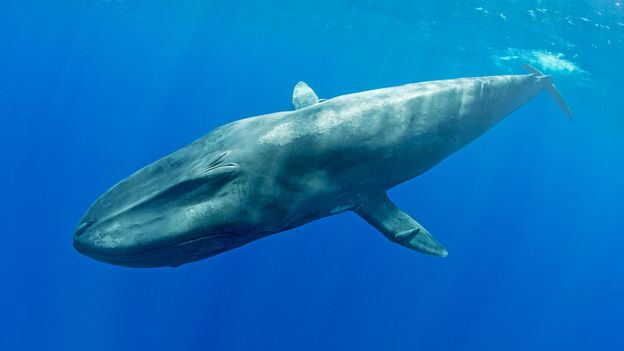
Scientists built this listening network to detect nuclear bomb tests. It found blue whales instead
Since the 1990s, a network of sensors has listened for unauthorised nuclear detonations. It has had unanticipated upsides for science – such as identifying a pod of pygmy blue whales.
Scientists built this listening network to detect nuclear bomb tests. It found blue whales instead
21 September 2023
By Richard Fisher, @rifish, Features correspondent
Share
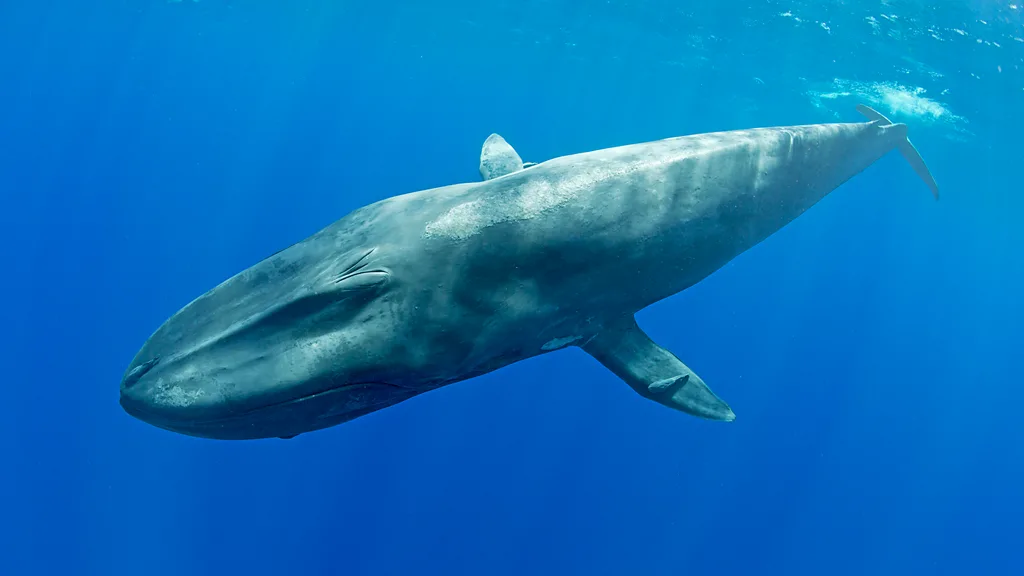
Getty Images
There's a pod of pygmy blue whales in the Indian ocean that we've never identified by eye - but can hear (Credit: Getty Images)
Since the 1990s, a global network of sensors has listened for unauthorised nuclear detonations. But as Richard Fisher discovers, its creation has led to unanticipated upsides for science – such as identifying a previously unknown pod of pygmy blue whales
For generations, the creatures swam through the ocean without crossing paths with any human beings. Some of them grew to 24m (80ft) long and weighed 90 tonnes. But if these enormous animals did encounter any boats, those meetings went unrecorded. Until recently, we didn't even know they were there: a pod of pygmy blue whales in the Indian Ocean.
Their discovery in 2021 was all the more striking because of how they were found. We wouldn't have come across them if it wasn't for nuclear weapons.
What have atomic bombs got to do with a pod of whales? The answer lies in a global network of sensors, placed in some of the world's most remote locations. Since the 1990s, its operators in a control room in Vienna, Austria have been listening for rogue nuclear tests. But as the years have passed, their network has also picked up many other sounds and rumblings throughout the ocean, ground and atmosphere – and that's now proving a surprising boon to science.

CTBTO
Many of the International Monitoring System sensors are placed in remote locations like Antarctica (Credit: CTBTO)
The story of how the blue whales were found can be traced all the way back to the 1940s, when human beings discovered they could unlock the terrible power of the atom. After the US Trinity test and the bombing of Japan, decades of instability and fear followed, as nations raced to build their own arsenals and test ever-more powerful weapons.
After 50 years, many governments accepted that transparency was needed. If nuclear escalation was to be avoided, the world needed a way to know if any rogue nation or actor was conducting unauthorised tests. Only then could they trust one another.
So, in the 1990s, a number of nations signed and ratified the Comprehensive Nuclear-Test-Ban Treaty (CTBT), including the UK and many Western European nuclear powers. A few did not, including China, India and the US. While these hold-outs meant the treaty failed to come into force, the process did create a global norm against testing. And crucially, it also led to the establishment of a network capable of hearing, sniffing or sensing a nuclear detonation anywhere on Earth.
With sensors all over the world, the International Monitoring System – run by the CTBT Organisation in Vienna – has been operating ever since, growing to more than 300 facilities worldwide that can detect the sound, shockwaves and radioactive materials of nuclear explosions. This includes more than 120 seismic stations, 11 hydro-acoustic microphones in the oceans, 60 "infrasound" stations that pick up very low-frequency inaudible noise, and 80 detectors of radioactive particles or gases.
Many facilities can be found in quiet, relatively undisturbed locations. The US, for example, operates a station on Wake Island in the Pacific, one of the world's most isolated atolls. Others can be found in Antarctica. However, a few are a little closer to civilisation, such as the seismic array in the village of Lajitas in Texas – 650km (400 miles) west of San Antonio – or the radionuclide station in Sacramento, California. ( Here's a map of all of them.)
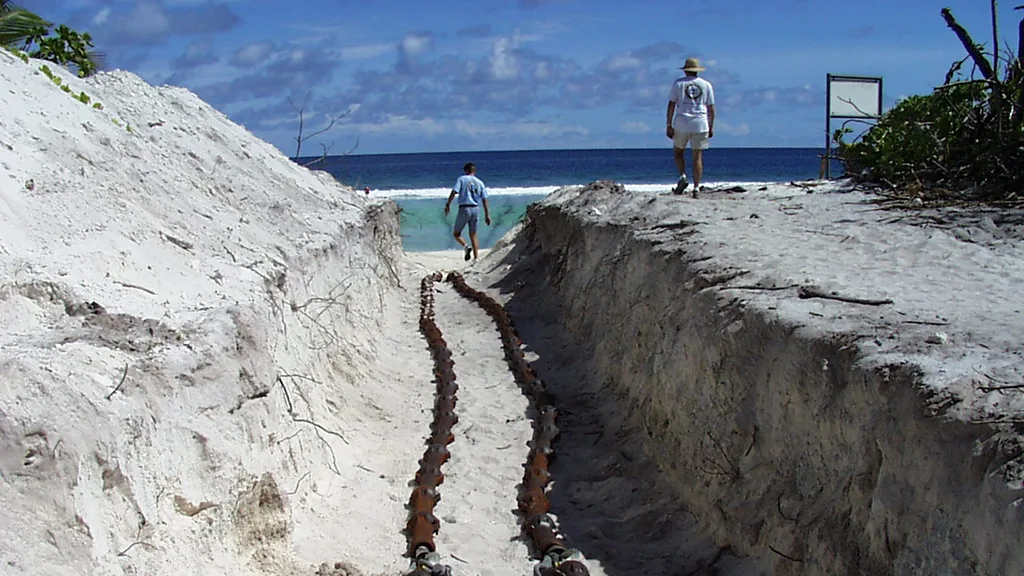
CTBTO
A cable on Wake Island, a US territory in the Pacific, connecting to underwater hydrophones (Credit: CTBTO)
Their widespread distribution means that if there's a nuclear detonation somewhere on Earth, the operators of the Vienna control room will know, says Xyoli Perez Campos, director of the International Monitoring System division [IMS] of the CTBTO in Austria. "Wherever it happens, we have the technologies to cover it," she says. "If there is an underground nuclear test, then we have the seismic technology to catch it. If the nuclear testing is underwater, then we have the hydro-acoustic stations. If testing happens in the atmosphere, then we have the infrasound. And the radionuclide stations allow us to distinguish if there was a nuclear component; that's the smoking gun."
Indeed, when North Korea conducted nuclear weapons tests in the 2000s and 2010s, various seismic sensors in the IMS picked up the waves from the blasts, and analysis of radioactive isotopes in the atmosphere confirmed it. The network has also sensed large non-nuclear blasts, like the enormous explosion in the port of Beirut in 2020, or the Hunga Tonga-Hunga Ha’apai volcanic eruption in January 2022.

The non-nuclear explosion in the port of Beirut in 2020 produced infrasound and seismic waves that could be detected from far away (Credit: Getty Images)
Recently, however, the IMS nuclear network has uncovered much more than big bangs. Over the past decade or so, as scientific access to the data has opened up, researchers have turned to the IMS to sense events that might otherwise go unnoticed. That includes the songs of whales, but also much more.
In June, hundreds of these scientists met at a conference in Vienna to share their findings. Researchers from Germany showed how the network's hydro-acoustic sensors can monitor noise caused by shipping, a team from Japan presented findings about how they'd used the IMS to study submarine volcanic activity, and a Brazilian researcher spoke about the infrasound generated by the aurora borealis and aurora australis.
Others described efforts to detect the crash of avalanching glaciers from afar – building on previous research that deployed the network to keep tabs on calving icebergs in Antarctica.
The physicist Elizabeth Silber of Sandia National Laboratories in Albuquerque, New Mexico even demonstrated how the IMS's detectors had picked up an "Earth-grazing fireball" – a meteoroid larger than 10cm (4in) that generated shockwaves as it struck the atmosphere on 22 September 2020.
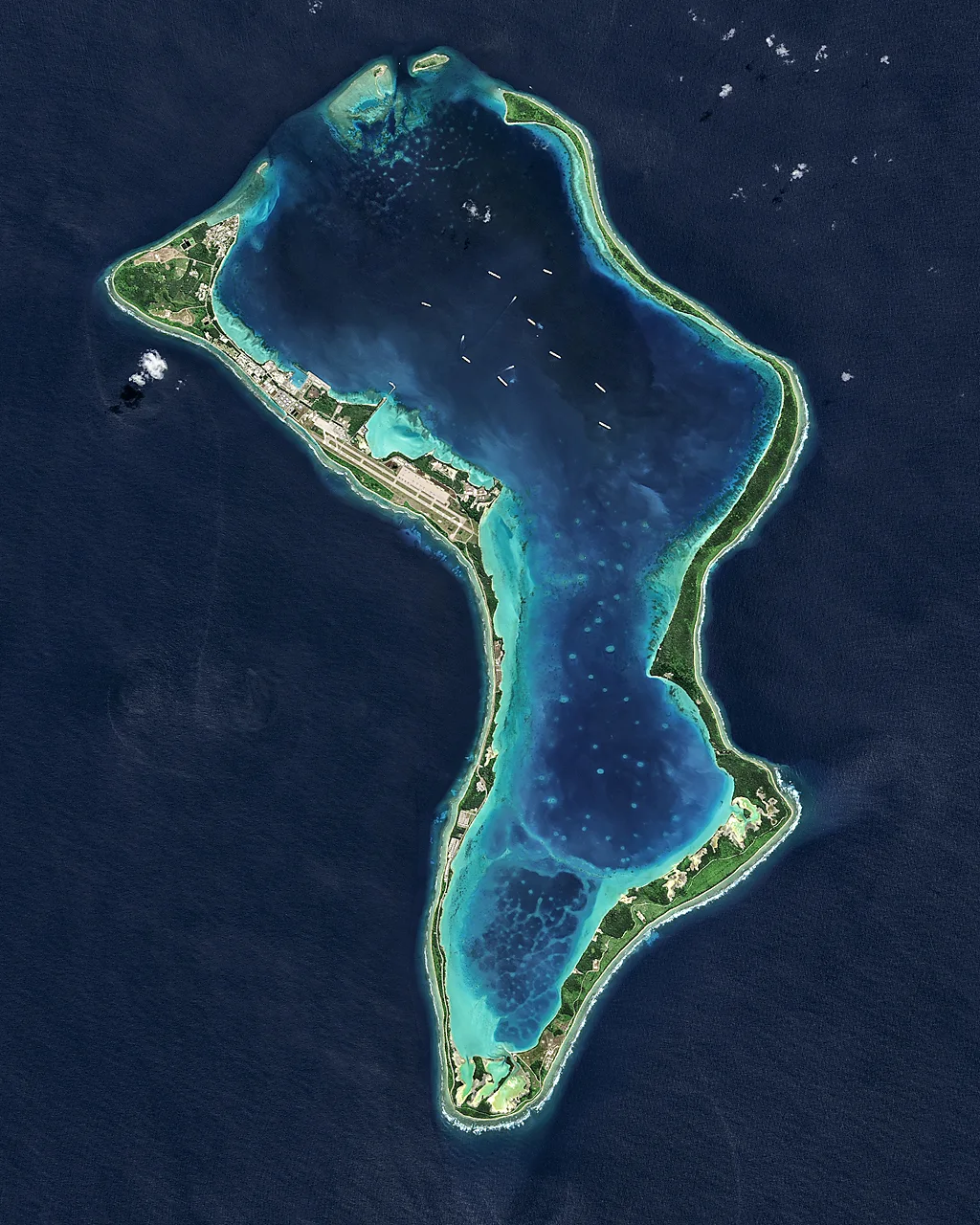
The whale song was first heard near the Diego Garcia atoll in the Chagos archipelago, south of the Maldives (Credit: Getty Images)
As for the pygmy blue whales – a tropical subspecies of blue whale – they were discovered when researchers in Australia decided to listen a little closer to ocean sounds using the IMS's hydro-acoustic network.
In 2021, bioacoustician Emmanuelle Leroy at the University of New South Wales, in Sydney, and colleagues analysed the songs of various whale populations in the central Indian ocean. A few years prior, a new song had been noticed, known as the "Chagos song", or "Diego Garcia Downsweep", named after the place it was detected: the Diego Garcia atoll in the Chagos archipelago.
At the time, five blue whale pods were known in the Indian Ocean, along with populations of Omura's whales. But it wasn't clear which group the Chagos song belonged to. Scientists know that each pod has strongly personalised calls, which means they can be sorted into "acoustic populations", and this one did not match.
Leroy and colleagues realised that the IMS network would allow them to study the Chagos song over almost two decades, at various locations in the ocean, ranging from Sri Lanka to Western Australia. Their analysis concluded that the Chagos song must belong to an entirely new population of pygmy blue whales.
Finding this new pod was a significant piece of good news, not least because pygmy blue whales are so rare. In the 20th Century, blue whales were hunted close to extinction, from an estimated 239,000 in the 1920s to a low of around 360 in 1973.
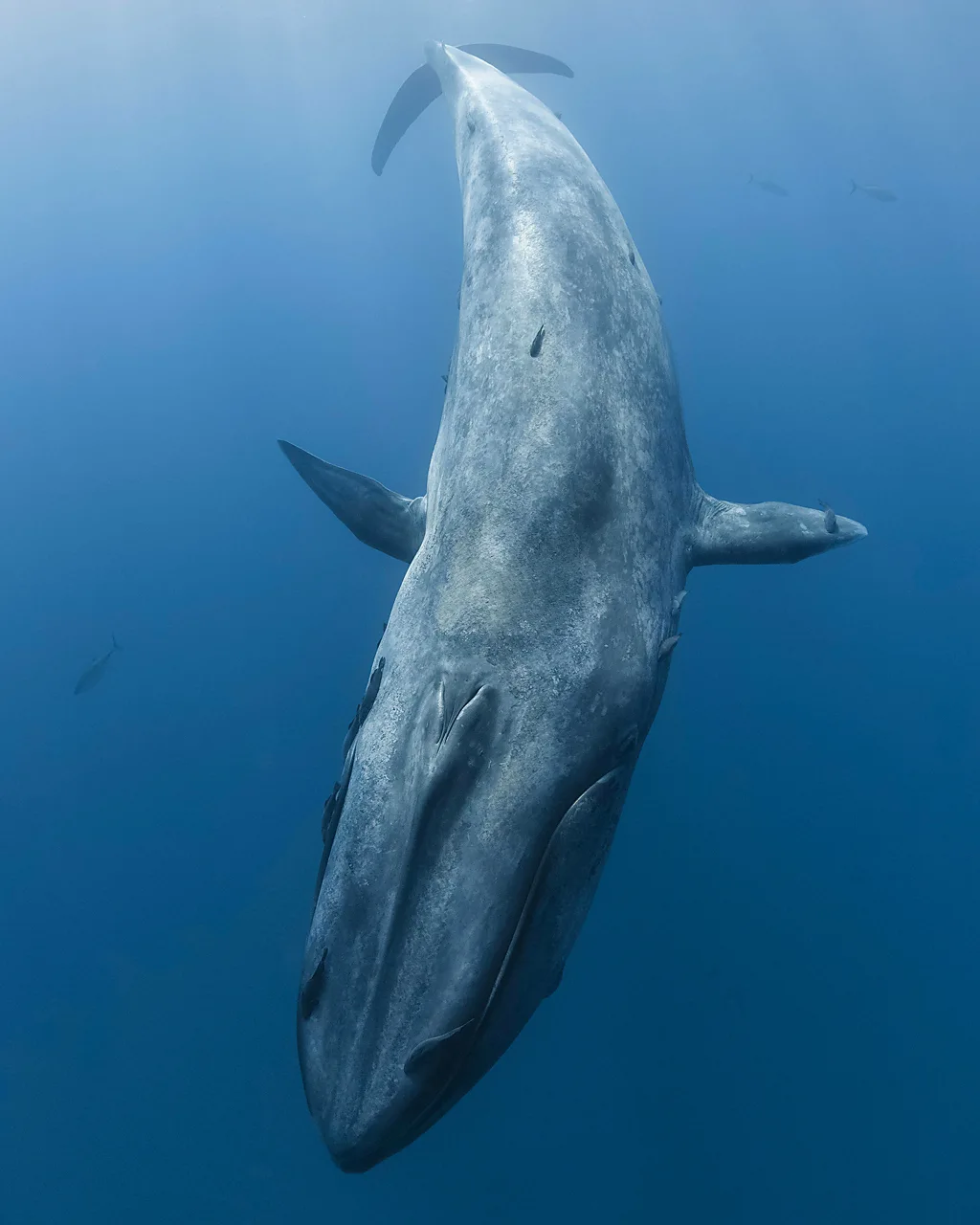
Knowing that a new population of pygmy blue whales exists is good news for their conservation (Credit: Alamy)
When the architects of the IMS built their detection network, they did so hoping that the world would be a little safer. "What is really amazing for me is that these smart people decided that nuclear testing is a hazard for humanity, and not only did they write a treaty saying let's stop it, but they came up with the technologies to monitor it. That is putting science and technology into good use for humanity," says Perez Campos.
But even with that foresight, the network's founders probably did not anticipate all of the IMS's uses today. Its 300-plus stations have evolved into the ultimate planetary listening network. Right now, at remote locations all over the world, sensors are monitoring humanity and nature for sounds and rumbles that might otherwise go unnoticed – and that includes a family of whales singing a unique song. We might not be able to see this elusive pod, but they can nonetheless be heard.